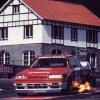Bosch Ev14 1000cc Injectors Latency Time And Powerfc Settings
Announcements
-
Similar Content
-
Latest Posts
-
Hi...a bit a "development" on the brakes. I spoke to the guys where i get brakes from...and they are saying that 296mm EBC are for R34 GT-T. I then went to their site: https://www.ebcbrakes.com/vehicle/uk-row/NISSAN/Skyline (R34)/ and search for my car(R34 GT 1998 - it has GTT brakes) and it show me this USR1229 number and they are rly 296mm rotors... So now iam rly confused... The rotors i have now on the car are 310mm asi shown... So where is the problem? Does the whole EBC got it wrong or my calipers are just...idk know what?
-
Oh What the hell, I used to get a "are you sure you want to reply, this thread is XX months old" message. Maybe a software update remove that. My bad.
-
This is a recipe for disaster* Note: Disaster is relative. The thing that often gets lost in threads like this is what is considered acceptable poke and compromise between what one person considers 'good' looks and what someone else does. The quoted specs would sit absurdly outside the guards with the spacers mentioned and need REALLY thin tyres and a LOT of camber AND rolling the guards to fit. Some people love this. Some people consider this a ruined car. One thing is for certain though, rolling the guards is pretty much mandatory for any 'good' fitment (of either variety). It is often the difference between any fitment remotely close to the guards. "Not to mention the rears were like a mm from hitting the coilovers." I have a question though - This spec is VERY close to what I was planning to buy relative to the inboard suspension - I have an offset measuring tool on the way to confirm it. When you say "like a mm" do you mean literally 1mm? Or 2mm? Cause that's enough clearance for me in the rear :p I actually found the more limiting factor ISNT the coilover but the actual suspension arms. Did you take a look at how close those were?
-
@GTSBoy yeah sorry i know thery are known for colors bud those DBA are too in colors 🙂 Green will be good enough for me
-





Recommended Posts
Create an account or sign in to comment
You need to be a member in order to leave a comment
Create an account
Sign up for a new account in our community. It's easy!
Register a new accountSign in
Already have an account? Sign in here.
Sign In Now